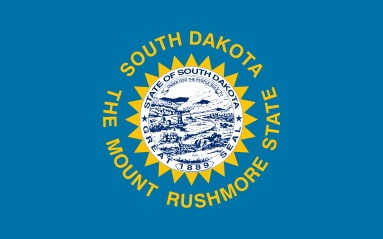Most vehicle owners consider car window tinting to be one of those upgrades that helps the long-term value of a car.
It lowers interior temperatures, adds privacy, reduces glare, and increases fuel efficiency in some cases because the AC doesn’t have to work as hard.
It also adds a layer of safety. By blocking most of the UV light, the tint prevents you from experiencing its harmful effects and preserves your cabin’s interiors from cracking, fading, or discoloration.
Below you will find details about the North Dakota tint law with regards to different types of vehicles.
Is Window Tint Legal In North Dakota?

North Dakota tint laws were enforced in 2003, making it the 41st state to enact these laws.
While some of the tint laws of the state are permissive, others are quite restrictive. The state no longer permits medical exemptions with regard to window tints.
The tint laws are split based on the type of vehicle. Depending on the kind of vehicle owned by you, you must follow the specified rules for applying the window tint.
If you fail to comply with the set rules, you will be charged a penalty if caught. It is important to comply with the laws for your safety and the safety of others.
Permitted Window Tint Darkness

To ensure your vehicle meets the set window tint laws of the state, you must first understand what VLT is.
VLT or visible light transmission is how opaque or see-through your tint film is. It is measured as a percentage. It determines how much light can pass through the film and the window.
The higher the VLT percentage is, the more transparent the tint is, and the more light is allowed to go through it. A lower VTL percentage means a more opaque tint with less light passing through it.
Sedans
Windshield: The vehicles are allowed non-reflective tints that allow over 70% of light in
Driver-side windows: 50% VLT
Passenger-side windows: No restrictions
Rear window: No restrictions
SUVs and Vans
Windshield: Non-reflective tints with over 70% light transmittance are allowed
Driver-side windows: 50% VLT is allowed
Passenger-side windows: No restrictions
Rear window: No restrictions
Acceptable Tint Reflection

Tint films with reflective compositions are capable of reflecting light. Reflective tints do not absorb heat or light. Instead, they bounce back the light that hits the surface. This deflection helps reduce glare and heat inside the vehicle.
There are various degrees of tint reflection. However, tint reflection differs from tint darkness in the way it handles light.
While tint darkness restricts how much light can enter through the film, tint reflection determines how much light reflects off the tint.
Other North Dakota Tint Rules You Need to Know

The state has several tint rules that you must consider before getting your car windows tinted.
- Side mirrors: In case of restricted light transmittance or tinted rear window, you must have dual side mirrors for your vehicle.
- Colored tint: There are no restrictions for colored tints in North Dakota.
- Window tint certification: Manufacturers are not required to maintain window tint certifications for the products they sell.
- Certified sticker: You are not required to use a certified sticker to identify the legality of your window tint.
- Medical exemptions: There are no medical exemptions for window tints in the state.
- Fine for violations: Illegal tints result in a moving violation. Per offense, the violator will be fined $20. This fine can increase, especially with subsequent offenses.
State of North Dakota Info

This Upper Midwest state of the United States got its name from the indigenous Dakota Sioux tribe.
It earned its statehood in 1889, becoming the 39th state by rank. Fargo is the biggest city in North Dakota.
It leads the nation in the agricultural industry, with about 90% of the land involved in various agricultural practices. It is nicknamed the Peace Garden State, and its state flower is the wild prairie rose.
Population: 699,628
Capital: Bismarck
Registered vehicles: 899,083
Total lane miles: 178,845
Number of highways: 4
Tint law references: Highway Patrol

